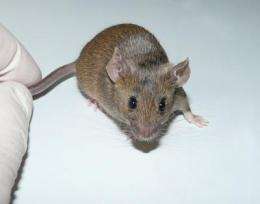Brain gene makes a female develop as a male

Australian scientists have discovered that changes to a gene involved in brain development can lead to testis formation and male genitalia in an otherwise female embryo.
University of Adelaide researchers are a step closer to unraveling the mysteries of human sexual development, following genetic studies that show male mice can be created without a Y chromosome – through the activation of an ancient brain gene.
Males usually have one Y chromosome and one X chromosome, while females have two X chromosomes. A single gene on the Y, called SRY, triggers testes development in the early embryo, and once these begin to form, the rest of the embryo also becomes male.
However, Adelaide researchers have discovered a way of creating a male mouse without a Y chromosome by activating a single gene, called SOX3, in the developing fetus. SOX3 is known to be important for brain development but has not previously been shown to be capable of triggering the male pathway.
In a major international collaborative study, they also have shown for the first time that changes in the human version of the same gene are present in some patients with disorders of sexual development.
The results of this work are published online today in the Journal of Clinical Investigation, and will be published in the journal's print version in January 2011.
"The Y chromosome contains a gene called SRY that functions as a genetic switch to activate the male pathway during embryonic development," says Associate Professor Paul Thomas from the University of Adelaide's School of Molecular & Biomedical Science.
"The SRY genetic switch is unique to mammals and is thought to have evolved from the SOX3 gene during early mammalian evolution."
Associate Professor Thomas and his colleagues have generated male mice with two X chromosomes by artificially activating the SOX3 gene in the developing gonads.
"These XX male 'sex reversed' mice are completely male in appearance, reproductive structures and behavior, but are sterile due to an inability to produce sperm," he says.
"We have suspected for a long time that SOX3 is the evolutionary precursor gene for SRY. By showing that SOX3 can activate the male pathway in the same way as SRY, we now believe this to be true."
This work is a longstanding collaboration between Associate Professor Thomas and Dr Robin Lovell-Badge at the Medical Research Council National Institute for Medical Research in London, who discovered the SRY gene in mice more than 20 years ago.
Dr Lovell-Badge says he's excited about the findings: "SOX3 normally functions in the development of the nervous system, but it is now clear that a mutation that makes it active in the early gonad can turn it into the switch that makes testes develop.
"It is now very likely that something similar to what has happened in the XX male mice and humans we describe also occurred in our early mammalian ancestors, and this led to the evolution not only of SRY, but of the X and Y chromosomes. Just think of all the trouble this little gene has caused!" he says.
Further collaborative research with Professor Andrew Sinclair at the Murdoch Children's Research Institute in Melbourne and Professor Eric Vilain at UCLA (University of California Los Angeles) has also shown that changes in the human SOX3 gene are present in some individuals who are XX males.
"From a genetic perspective, cases of XX male sex reversal are particularly intriguing and are poorly understood," Associate Professor Thomas says.
"This discovery provides new insight into the genetic causes of disorders of sexual development, which are relatively common in the community.
"For the future, this discovery will impact on the molecular diagnosis of these disorders and, ultimately, help us to develop therapies or technologies to improve clinical outcomes," he says.
More information: The study is published today in The Journal of Clinical Investigation. www.jci.org/
















